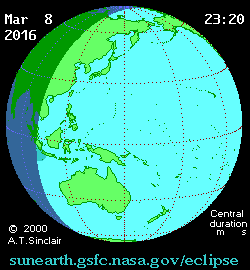Ancients from nearly every civilization interpreted eclipse as the act of evil deities and spirits. They thought of it as an indicator of war, famine, drought, and every bad fate.
They didn’t know that it could be of benefit in numerous fields, not only in science but also in history, technology, and even politics.
A solar eclipse can be of 4 types: A total eclipse is when the Moon obscures the entire disk of the Sun. A partial eclipse occurs when the Moon occults a portion of the Sun throughout the entire solar eclipse.
📚 Read Also: Prophet’s Hadiths on Eclipses
Annular eclipse occurs when the Moon occults the Sun but leaves a thin ring of the Sun’s disk visible around itself. This takes place when the Moon is at the farthest point of its orbit around Earth, referred to as the Aphelion. (Conversely, when the Moon is at the nearest point in its orbit, it is referred to as the Perihelion.)
The fourth and last type is the hybrid eclipse, seen in some locations on Earth as total while in others as annular, due to the curvature of Earth and the movement of the Moon between the farthest and the nearest points on the side edge of its orbit.
How rare are hybrid solar eclipses?
Of the 11,898 solar eclipses listed over 5,000 years from 1999 BC to 3000 AD in Fred Espenak’s Five Millennium Catalog of Solar Eclipses, only 569, or 4.8%, are hybrids.
Moreover, although at least two, and up to five, solar eclipses occur each year, total solar eclipses don’t recur in the same location on Earth except every 370 years.
Variety of Benefits

Solar eclipses, especially the total one of the May 29th, 1919, proved the Gravitational Lensing phenomenon Albert Einstein predicted in his General Relativity Theory.
During this eclipse, the positions of background stars near the Sun were used to prove that light waves bend as they reach bodies with weight in SpaceTime due to gravity.
Many physicists believe that the phenomenon of the solar eclipse, especially the totality phase, is firmly interlinked with several gravitational phenomena.
Studying the solar eclipse phenomenon and calculating whether we expect its occurrence accurately or not also helps us verify our ability to predict celestial orbits and factors of celestial mechanics in outer space.
We depend on such studies in launching satellites, space probes, and other equipment we put in orbit around Earth.
Pages: 1 2